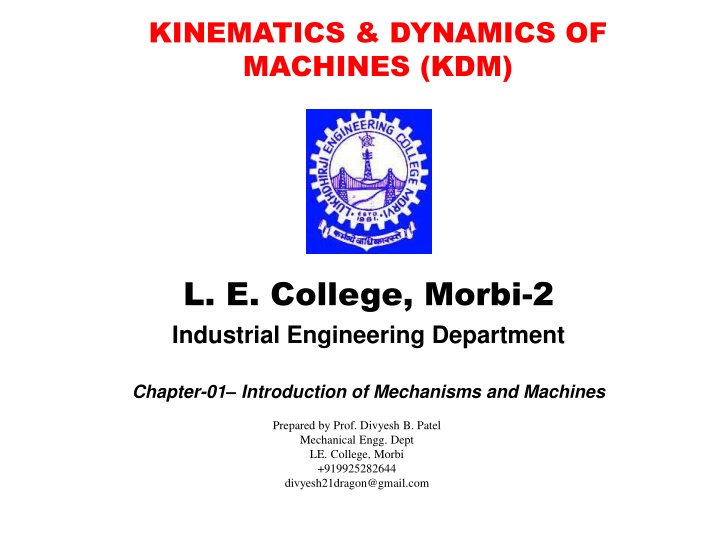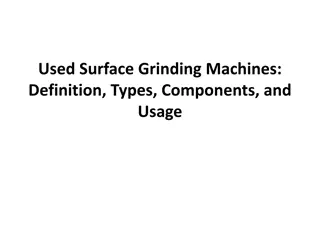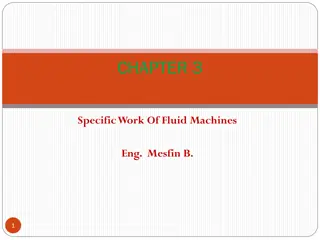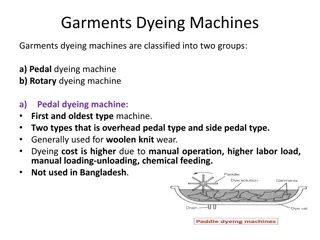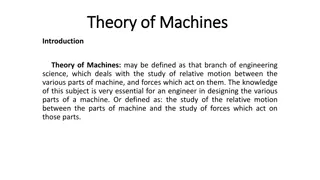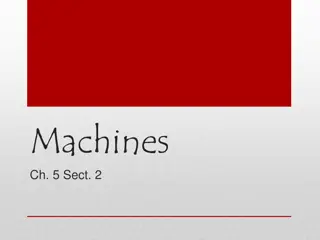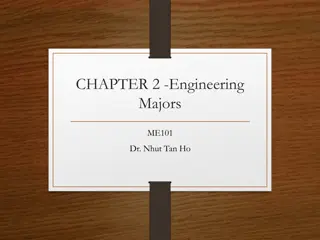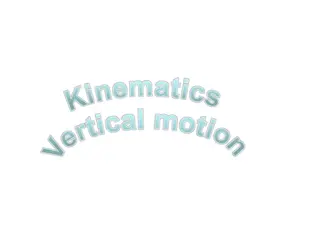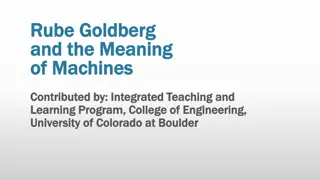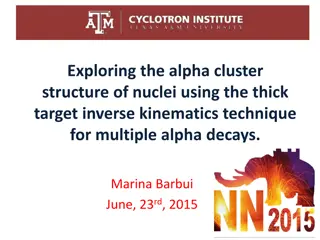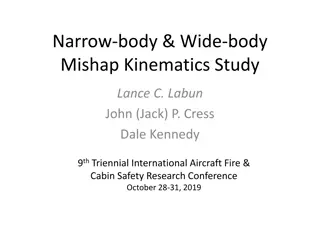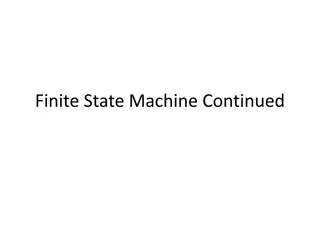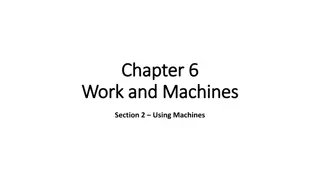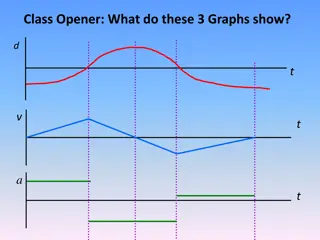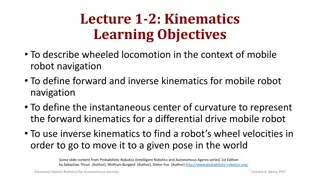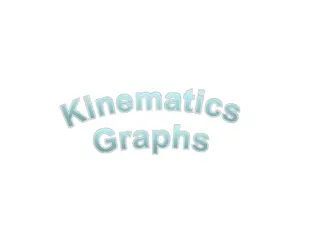Introduction to Kinematics and Dynamics of Machines in Mechanical Engineering
Theory of Mechanics delves into motion, time, and forces, with Kinematics focusing on motion analysis without considering external forces. Kinetics, a branch of Theory of Machines, deals with inertia forces resulting from mass and motion. Dynamics combines Kinematics and Kinetics to study motion and forces in machines, while mechanisms and machines are interlinked systems that transfer mechanical energy for desired work.
Download Presentation

Please find below an Image/Link to download the presentation.
The content on the website is provided AS IS for your information and personal use only. It may not be sold, licensed, or shared on other websites without obtaining consent from the author.If you encounter any issues during the download, it is possible that the publisher has removed the file from their server.
You are allowed to download the files provided on this website for personal or commercial use, subject to the condition that they are used lawfully. All files are the property of their respective owners.
The content on the website is provided AS IS for your information and personal use only. It may not be sold, licensed, or shared on other websites without obtaining consent from the author.
E N D
Presentation Transcript
KINEMATICS & DYNAMICS OF MACHINES (KDM) L. E. College, Morbi-2 Industrial Engineering Department Chapter-01 Introduction of Mechanisms and Machines Prepared by Prof. Divyesh B. Patel Mechanical Engg. Dept LE. College, Morbi +919925282644 divyesh21dragon@gmail.com
THEORY OF MECHANICS This branch of scientific analysis which deal with motion , time and forces is called mechanics
Sub-divisions of Theory of Machines Kinematics of machines is concerned with the motion of the parts without considering how the influencing factors (force and mass) affect the motion. Therefore, kinematics deals with the fundamental concepts of space and time and the quantities velocity and acceleration derived there from. Kinetics It is that branch of Theory of Machines which deals with the inertia forces which arise from the combined effect of the mass and motion of the machine parts. Dynamics is the combination of kinematics and kinetics.
1. Which of the following disciplines provides study of inertia forces arising from the combined effect of the mass and the motion of the parts (a) theory of machines (b) applied mechanics (c) mechanisms (d) kinetics (e) kinematics. 2. Which of the following disciplines provides study of relative motion between the parts of a machine (a) theory of machines (b) applied mechanics (c) mechanisms (d) kinetics (e) kinematics. 3. Which of the following disciplines provides study of the relative motion between the parts of a machine and the forces acting on the parts (a) theory of machines (b) applied mechanics (c) mechanisms (d) kinetics (e) kinematics.
Introduction MECHANISMS: If a number of bodies are assembled in such a way that the motion of one causes constrained and predictable motion to the others, it is known as a mechanism. MACHINES:A machine is a mechanism or a combination of mechanisms which, apart from imparting definite motions to the parts, also transmits and modifies the available mechanical energy into some kind of desired work.
Kinematic Link or Element Link is defined as a rigid body having two or more pairing elements which connect it to other bodies for the purpose of transmitting force or motion Each part of a machine, which moves relative to some other part, is known as a kinematic link (or simply link) or element.
Type of Link or Element When a link is connected to two other links, it is known as binary links. When a link is connected to three other links it is known as ternary links. When a link is connected to four other links it is known as quaternary links.
Clssification of links: 1) Rigid link. A rigid link is one which does not undergo any deformation while transmitting motion. 2) Flexible link. A flexible link is one which is partly deformed in a manner not to affect the transmission of motion.
Types of links: 3) Fluid link. A fluid link is one which is formed by having a fluid in a receptacle ( container ) and the motion is transmitted through the fluid by pressure or compression only.
Kinematic pairs: The links of mechanism must be connected together in some manner in order to transmit motion from the input link to output link. These connection, joints between the links are called kinematic pairs. OR The two link or element of a machine, When in contact with each other, are said to form pair. If the relative motion between them is completely or successfully constrained the pair is know as kinematic pair
Types of constrained motion: 1) Completely constrained motion: When the motion between a pair is limited to a definite direction irrespective of the direction of force applied, then the motion is said to be a completely constrained motion.
Types of constrained motion: 2) Incompletely constrained motion: When the motion between a pair can take place in more than one direction, then the motion is called an incompletely constrained motion. A circular bar or shaft in a circular hole, as shown in Fig., is an example of an incompletely constrained motion as it may either rotate or slide in a hole. These both motions have no relationship with the other.
Types of constrained motion: 3) Successfully constrained motion: When the motion between the elements, forming a pair, is such that the constrained motion is not completed by itself, but by some other means, then the motion is said to be successfully constrained motion. Consider a shaft in a foot-step bearing as shown in Fig..
